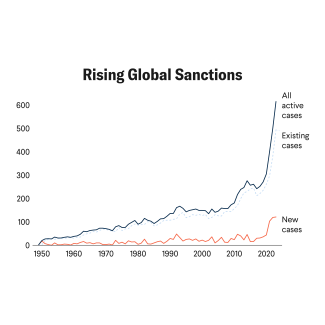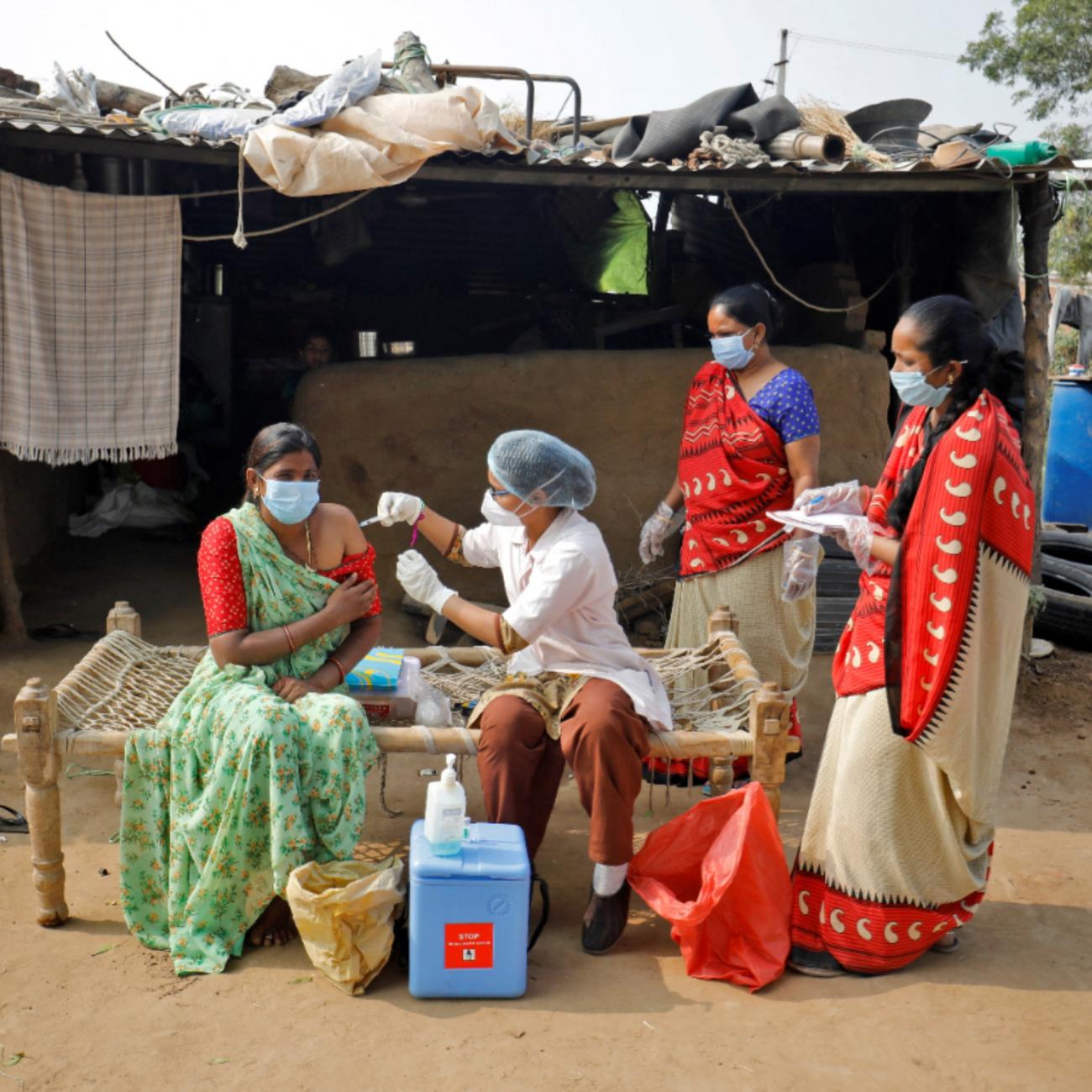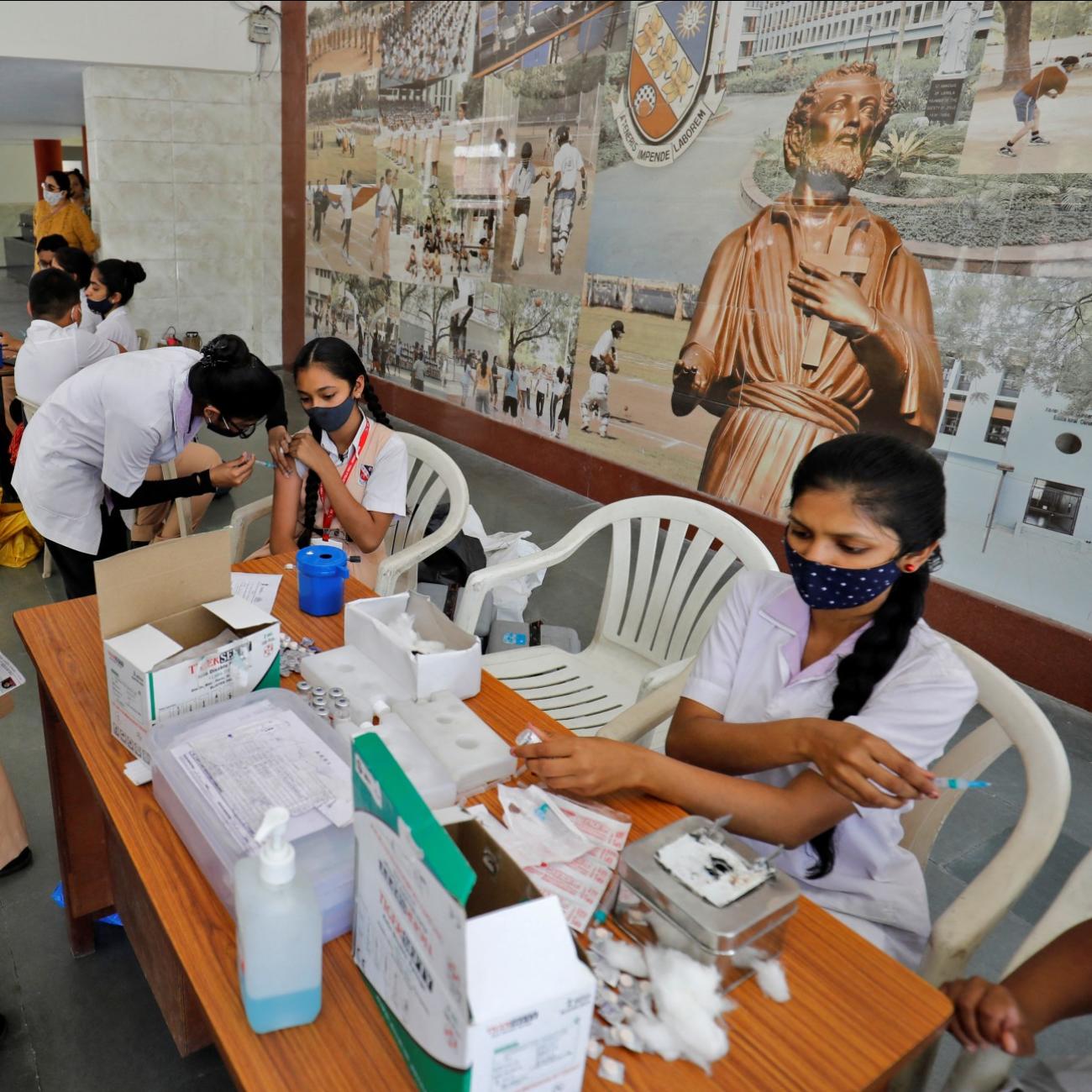In a first-century BCE treatise on friendship, Cicero wrote, "In nothing do men approach so nearly to the Gods as in giving health to men." Centuries and continents apart, India has mobilized Vasudhaiva Kutumbakam ("the earth is one family")—an even older Hindu philosophy—to imply the same message: For better or for worse, the ability to provide for good health is akin to divine power.
Vasudhaiva Kutumbakam has been the basis of Indian foreign policy since the country's independence in the 1940s. Today it is an encapsulation of India's historically nonaligned positionality, its commitment to supporting low- or middle-income countries' (LMICs') interests, and its subsequent critique of the great power politics that dominate international relations. Yet Vasudhaiva Kutumbakam has proven a complicated position to defend, given rising geopolitical tensions and growing challenges to nonalignment. As India attempts to bolster its geopolitical profile, its foreign policy has had to navigate "global contradictions," balancing alignment with developing and developed national blocs alike.
In no realm might have India been better positioned to prove its commitment to Vasudhaiva Kutumbakam as in global health, where India's contributions have become synonymous with its domestic pharmaceutical sector. The sector now supplies 20% of the world's generic medicines and 37% of LMICs' vaccines, contributing significantly to the availability of low-cost, life-saving therapeutics in the developing world.
In recent years, Indian pharma—and vaccine manufacturers particularly—have become integral components of the global therapeutic supply chain, leveraging their economies of scale to partner on efforts to combat COVID-19, meningitis, dengue fever, and malaria, among others. These contributions have afforded India the title of "the world's pharmacy," bolstering the nation's soft power by materially supporting its claims to championing the developed world. At the same time, preserving this influence has required protecting the industry—which has occasionally run counter to the Global South's interests.
As India continues to engage in global health power politics, this contradiction may shape India's strategy—and the resulting balance of power.
Indian Pharma
Indian pharma's rise mirrors the country's development narrative, the story of a nation that rose to power advocating for developing nations like itself. Buoyed by equity-oriented reforms to the Indian intellectual property (IP) system in the late twentieth century, Indian pharma became a powerhouse in reverse-engineering patented pharmaceutical formulations. In producing these formulations as off-brand generics, the sector was able to supply therapeutics at a fraction of the cost of the patent-holding firms based in the West.
The export-forward pharmaceutical industry emerging from post-1970 India dovetailed seamlessly with India's growing international activism
Notable examples include ranitidine, an anti-ulcer drug sold in India at less than a hundredth of the cost of GSK's U.S. market equivalent in 1998, and an infamous antiretroviral AIDS therapy offered to African governments in the early 2000s at 60% of the cost posited by multinational firms. Simultaneously, India—backed by its domestic industry—led the coalition pushing for international intellectual property flexibilities that would have allowed similar sectors to emerge in other developing markets. Thus grew India's image as a champion of LMIC interests, linking India's political capital in the global health ecosystem to the work of the pharmaceutical sector.
Shifting global dynamics in the 1990s forced India to tighten its intellectual property laws and bring its system in line with the global norms—notably through the 1994 Trade Related Aspects of Intellectual Property Rights (TRIPS) Agreement. Although experts were concerned that these reforms would bring the end of India's generic pharmaceutical industry, the sector has survived and most essential drug prices have remained low. This trend has largely been attributed to the industry producing essential medicines that were already off-patent and the growing sector's leeway to expand into new partnerships, markets, and research and development.
Yet the sector's growing dominance in the global market has placed the government of India in a unique bind.
A Changing Sector
The export-forward pharmaceutical industry emerging from post-1970 India dovetailed seamlessly with India's growing international activism. As India advocated on behalf of developing nations in World Trade Organization (WTO) negotiations, its industry provided substantive backing for its authority. In this way, Indian pharma has become an extension of the Vasudhaiva Kutumbakam ethos, especially under the Modi administration.
For much of the sector's development, Indian global health advocacy also aligned with the intellectual property flexibilities sought by developing countries because Indian pharma itself benefited from them. Today, however, the government's standing toward IP appears to be shifting as a result of the domestic pharmaceuticals sector's changing priorities. As the industry invests in greater research and development, advocacy from both corporate actors and the government is moving away from provisions that would support generics production to a framework more in line with multinational pharmaceutical goals.
One of the most controversial IP flexibilities at play is compulsory licensing, a mechanism that allows governments to waive patent protection for certain innovations in the public interest. Yet press statements published this summer in relation to TRIPS waiver negotiations walked back India's initial support for compulsory licensing mechanisms, even as India led the push to waive TRIPS provisions for COVID-19 related innovations. Moreover, Indian pharmaceutical firms are increasingly seeking their own voluntary licensing agreements with multinational pharmaceutical companies, forgoing compulsory licensing agreements that would benefit emerging sectors.
Facing mounting scrutiny from the West, the government of India has also increasingly chosen not to deploy existing pharmaceutical IP flexibilities within its own laws. Despite criticisms that this approach would harm domestic consumers and those relying on Indian exports in the Global South, India's actions are indicative of its changing stance—one also reflected in its 2023 "Approach on Pharmaceutical Policy." In response to a 2021 Supreme Court inquiry on India's unwillingness to deploy IP flexibilities in response to COVID-19, the government made its stance explicit: that doing so would be "counterproductive" to India's international diplomatic efforts.
Thus a pattern emerges—one in which the Indian government must balance its advocacy on behalf of developing nations with the interests of its growing domestic industry. Consequently, even as Indian pharma is able to continue supplying the developing world with low-cost, generic medicines, India has moved away from supporting IP infrastructure that would enable long-term pharmaceutical capacity-building in developing nations. In doing so, India has strengthened its relationships with the West and domestic industry while continuing to fulfill its claims to "one world, one family."
Vasudhaiva Kutumbakham and India's Global Health Engagement
Bringing this positionality into its international advocacy, India has carved out a "middle ground" for itself in global health.
On one hand, the nation has continued its rhetoric around equitable IP systems and has been a vocal proponent of reexamining the TRIPS waiver's applicability post-COVID in collaboration with developing nations. Its 2020 proposal for World Health Organization (WHO) reform in light of the COVID-19 pandemic called for greater representation of developing nations in technical decision-making capacities and greater WHO assistance ensuring International Health Regulation (IHR) compliance. Similarly, its proposed amendments to the now-concluded IHR reform process also emphasized "inclusivity" and "equity" as foundational principles.
Deploying IP flexibilities would be "counterproductive" to India's international diplomatic efforts
Yet, the evolution in India's pharmaceutical sector has influenced the country's modern engagement on these issues; at the same time, notable instances of India's equity-oriented IP rhetoric persist. This contradiction underscores India's distinct pressures in global health, and suggests that despite shifting industry perspectives, India will hold onto its seminal IP legislation and the power that comes from advocating that stance. Conversely, given the immense international pressure India has received for deploying these flexibilities in the past, the government is unlikely to risk its strategic positionality by vocally leveraging these mechanisms.
Although the push for "access" has remained a mainstay in India's engagement with the IHR and WTO forums, India has sought a more conciliatory role for its leadership. The 2024 World Health Assembly saw divisions on how to address two parallel agenda items: amendments to the IHR and the ongoing Intergovernmental Negotiating Body (INB) for the Pandemic Treaty. As a bloc of developing nations pushed to link the outcomes of the two processes together—relying on growing momentum behind the IHR to drive accessibility priorities in the INB—others hoped to leverage existing consensus to conclude reforms to the IHR.
Recognizing these tensions, the Indian delegation (as committee chair) proposed a single working group to address first the IHR, followed by practical considerations to advance the INB. Given India's unique constraints, this procedural role may be where it is best suited to contribute, balancing internationally the contradictions it also faces at home.
As negotiations continue on the INB and TRIPS reform, India will no doubt continue to play a leading role, empowered by its pharmaceutical sector's contributions to global health security efforts. Ultimately, it will be this interplay between India's commitments to Vasudhaiva Kutumbakam, strategic nonalignment, and domestic industry's evolving interests that will determine how India preserves and wields its power in global health.



